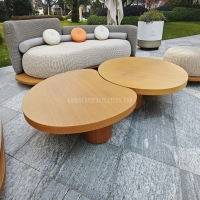Welcome to the website for landscape facilities products and knowledge.
What are the most important innovations in the table’s manufacturing process?
The table manufacturing industry is undergoing its most significant transformation in centuries, driven by technological breakthroughs that are redefining production standards. Among the most impactful innovations, computer numerical control (CNC) machining stands out for its precision engineering capabilities, enabling complex designs previously impossible through traditional woodworking. This technology allows manufacturers to produce intricate table legs and custom joints with microscopic accuracy, substantially reducing material waste while expanding creative possibilities.
Another revolutionary advancement comes through automated robotic assembly systems, where collaborative robots now work alongside human technicians to handle repetitive tasks like sanding, polishing, and component assembly. These robotic systems maintain consistent pressure and motion patterns, ensuring every table surface receives identical treatment regardless of production volume. The integration of Internet of Things sensors throughout the manufacturing line provides real-time quality monitoring, immediately flagging any deviations from specifications before products advance to subsequent stages.
Material science innovations have dramatically altered table composition, with engineered wood products like cross-laminated timber offering superior stability compared to solid wood. Sustainable manufacturing has been revolutionized through bio-based resins and adhesives that replace formaldehyde-based alternatives, while advanced recycling systems now repurpose approximately 98% of wood waste into particleboard or biomass energy. The emergence of 3D printing technology enables rapid prototyping of table designs and direct production of complex metal and polymer components, drastically shortening development cycles.
Digital twin technology represents perhaps the most sophisticated innovation, creating virtual replicas of physical manufacturing systems that simulate production processes before implementation. Manufacturers can test new table designs, materials, and assembly methods in these digital environments, identifying potential issues without disrupting actual production. This virtual testing capability, combined with AI-powered predictive maintenance that anticipates equipment failures before they occur, has reduced downtime by up to 45% in forward-thinking manufacturing facilities. These collective innovations haven't merely accelerated production; they've fundamentally reimagined what's possible in table craftsmanship, sustainability, and customization.
Related search:

Recommendation
Elliptical metal outdoor table with nested design, resembling wood grain, round table